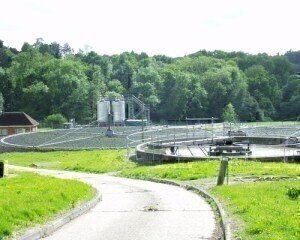Water/Wastewater
Producing Ultra-pure Water at Lower Costs
May 03 2012
Power utilities and operators of industrial facilities are lowering their production costs for ultra-pure water with a new watertreatment module from Siemens (Germany). The ultra-pure water in question contains virtually no ions, very limited qualities of salts or minerals, in other words. It is often used in the chemical industry, in production of semiconductor chips, or to treat water for steam that drives turbines in power plants. The deionisation of industrial water takes place step-by-step in a series of increasingly sensitive processes. Water that contains a great deal contaminants has to be treated several times prior to the finest stage of purification. A new ultra-fine purification module from Siemens can now process harder water, which reduces the amount of energy and investment needed for its pretreatment.
After a preliminary purification, the water first undergoes reverse osmosis in order to reduce ions. In reverse osmosis, a large amount of energy is expended to force the water through filters that screen out microparticles and salts. After that, the water flows through an electric field within channels whose outer membranes allow only positively or negatively charged ions to pass through them. Since ions migrate in the electric field, there ensues an alternating accumulation of pure water and ion-rich water in separate channels. To support the process, the channels are filled with special resins that allow the ions to transport onward. This continuous electrodeionisation (CEDI) can be susceptible to faults, however, when the water being purified is too hard (eg high levels of hardness ions like Magnesium and Calcium). Water with high degrees of hardness very often must undergo additional pretreatment using double reverse osmosis prior to this process.
Experts from Siemens have shown that the efficiency of the CEDI process depends on the intra-membrane spacing filled with ion-exchange resin. The channels of the new VNX CDIT modules are only a little larger than three millimeters wide. Compared with older modules, the new solution processes water containing four times as much hardness and over twice as much salt in the feed water. This eliminates the need for the second reverse osmosis process, and the operators save on not only energy costs but also expenditures for additional equipment. And since the new module is less susceptible to fluctuations in the water’s ion content, there are fewer problems and less downtime.
The new VNX CDIT modules complement Siemens Water Technologies’ Ionpure product line. They process 113 litres of water per minute and are particularly suitable for use at industrial facilities and power utilities that need large quantities of water. Siemens has applied for a U.S. patent on the technology.
Events
Apr 22 2024 Hannover, Germany
Apr 23 2024 Kuala Lumpur, Malaysia
Apr 24 2024 Sao Paulo, Brasil
May 05 2024 Seville, Spain
May 13 2024 Munich, Germany













